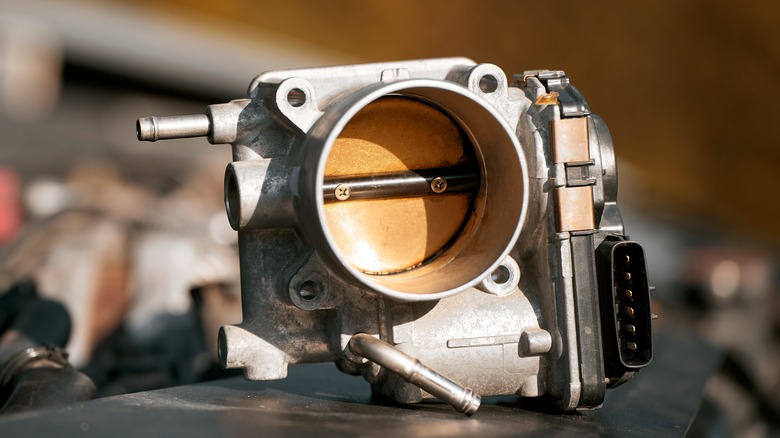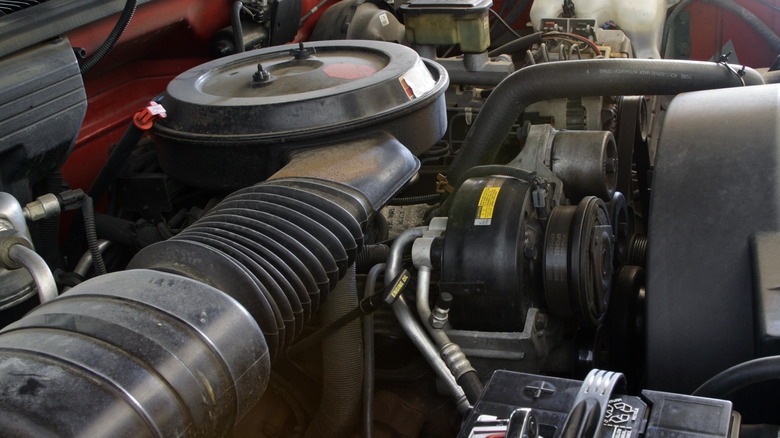What Does CID Stand For On An Engine?
There are a few different kinds of combustion engines out there. Most of them are fairly simple machines in theory, but decades of refinement and innovation have made modern engines into complex marvels of physics and engineering. So in order to gain a true understanding of how an engine works, you first need knowledge of the engineering terms and metrics that were used in its construction.
If you've ever decided to poke around under the hood of your car, then you might have noticed that there are some letters and numbers printed on your engine casing. These designations can refer to several different aspects of the engine design. Most car owners will probably go their whole lives without ever giving these letters a second glance, but anyone who's curious to learn more about their vehicle might want to know what they stand for.
One common designation that can be found on many vehicles is the abbreviation CID. This stands for Cubic Inch Displacement. Many people often use this term to refer to an engine's overall size, but it actually refers to the amount of air that moves through your engine in a given cycle. To gain a better understanding of this number, you first need to know how CID works and why it's important.
Understanding CID
The basics of an internal combustion engine are pretty straightforward. A blend of fuel and oxygen is introduced into a combustion chamber, either by a fuel injector or carburetor, where a spark is introduced, causing combustion. This expands the air in the cylinder which moves the pistons that, in turn, rotate the crankshaft. But one thing that's easy for some people to overlook is that controlling the airflow within the engine is just as important as controlling the fuel. A specific amount of air is drawn into the engine on the intake stroke and pushed out of the engine on the exhaust stroke in order to control the richness of the fuel mixture and the rate of combustion. This is fundamentally different from how an electric vehicle receives power.
A gas engine's cubic inch displacement measures the number of cubic inches of air that are displaced by an engine in a given cycle. This accounts for the entirety of the space that air travels, multiplied by the number of strokes per second. You can find the displacement of any engine by using a mathematical formula: π x (radius)2 x stroke x number of cylinders. Manufacturers that use imperial units measure the radius in inches, resulting in the CID. Manufacturers that use metric often refer to displacement in CCs (cubic centimeters).
Why is engine displacement important?
CID measures the volume of airflow through an internal combustion engine, but why is that important? There are a couple of reasons why it's good to understand engine displacement. From a design perspective, manufacturers need to know how much oxygen is passing into the engine in order to regulate the amount of fuel that is combined with it to create a balanced mixture for combustion. This is how these manufacturers can make a reliable gas engine that runs smoothly. This particular utility probably won't directly impact most drivers, though, as the engine has already been built by the time they receive it.
The other reason that CID is important is because it's an excellent metric for understanding an engine's power output potential. A higher CID means an engine can move more air, which means it can burn more fuel and thereby generate more power. This isn't a perfect system since there are other factors, like turbochargers, that can influence an engine's power output as well. So two engines with the same CID may be able to put out slightly different amounts of horsepower. Even so, an engine's CID is a good way to get a baseline for what kind of performance you might be able to expect.


